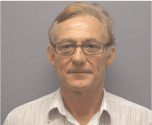Reservoir mapping: the latest development in well placement
Grant Skinner A , Mauro Viandante A , Kamal Jansen A , David Thornton B , Mike Rapaic B and Kanchit Jantarangsi BA Schlumberger.
B PTTEP Australasia.
The APPEA Journal 53(2) 438-438 https://doi.org/10.1071/AJ12049
Published: 2013
Abstract
The PTTEP Australasia Montara development wells were recently drilled using a new deep-directional electromagnetic-resistivity tool, which enabled the simultaneous real-time mapping of multiple and varied geological and fluid boundaries in a thick reservoir, through the entire length of the horizontal section.
Conventionally, geosteering is undertaken using borehole-scale measurements; data at this scale requires the wellbore to come in close proximity or cross a feature before it is detected. This scale of measurement is good for finer detail features but does not allow for visualisation of the geology beyond what it is measured at or just beyond the borehole wall. Nor does it enable a refinement of the geophysical subsurface unless at points of contact between the well and the feature that needs to be avoided.
To bridge the gap between surface seismic resolution and measurements obtained at the borehole scale, a new deep-directional electromagnetic tool sensitive to variable resistivities but able to identify boundaries tens of metres away was required. The past decade has shown a significant development in resistivity measurement technology providing directional resistivity at a significantly larger scale than conventional logging tools. The first generation allowed wells to be placed proactively, removing the need to cross the boundary or be very close to it before it was identified. This latest generation of proactive geosteering tools has been developed to remove this gap, allowing for a refinement in geophysical/geological models and a new methodology in geosteering, moving the game from boundary to reservoir geosteering.

Grant Skinner graduated from the University of Saskatchewan in 1999 with a BSc (geology). He has extensive experience in the oil industry including work in Europe, North Africa, North America, India, West Africa, and Trinidad. He is presently a senior geologist working as well placement domain champion for Schlumberger Australasia where he coordinates geosteering development and operations. Member: FesAUS, SPE, SPWLA. |

Mauro is well placement team leader (operations) at Schlumberger Australasia. His experiences are based mainly on real-time geosteering with RSS, LWD tool, PeriScope and EcoScope, PETREL modelling (geo-statistical uncertainty evaluation of well placement), RTGS mapping and modelling, log interpretation, data analysis and evaluation, and real-time and recorded-mode LWD image interpretation. He has a PhD (structural geology), which proposes a compatible structural model for the evolution of the Apennine Chain thrust system to reconstruct the burial/exhumation paths (integrating thermo-chronological and structural data) of Central Apennines sedimentary succession. |

Kamal Jansen graduated from Trisakti University of Jakarta, Indonesia, in 1991 with a BSc (electrical engineering), and is now completing an MBA at UWA. He has worked in the oil and gas industry in Asia, Australia, the US, and central Asia for the past 20 years, and held various senior managerial and technical roles. He is the Petrotechnical Engineering Centre (PTEC) manager at Schlumberger Australasia. Member: Formation Evaluation Society of Australia. |

David graduated as a geologist in 1974 with a BAppSc from the University of Canberra and started his professional career as a hydrologist. In 1978, he switched to the oil and gas Industry, initially working as a data engineer for EXLOG. Since 1980, he worked with many oil and gas companies, both as an employee and as a consultant, as explorationist, petroleum engineer, reservoir engineer, development geologist, and operations geologist. In 1992, he obtained an MSc from the National Centre for Petroleum Geology and Geophysics (Adelaide University) and has since worked on oil and gas developments in the Surat and Cooper onshore basins, and the Roller, Skate, Saladin, Montara, Skua, Swift, Tenacious, Audacious, and Cash-Maple offshore oil and gas fields. He is now employed by PTTEP AAA as a senior explorationist and development geologist. |

Michael Rapaic graduated with a BAppSc (geology) from W.A.I.T in 1983. He began his career in the petroleum industry with Geoservices and then moved to WMC as an explorationist. He spent several years at Woodside Energy as a senior operations geologist before moving into geological consulting in southeast Asia. His present assignment is with PTTEP AAA where he is a senior development geologist on the Montara and Cash-Maple developments. |

Kanchit Jantarangsi has a BSc (geology) from Chiang Mai University, Thailand. He completed an MSc in (petroleum geoscience) at the University of Brunei Darussalam in 1999. He began his career with PTTEP in 1997 as a geologist. He has extensive experience in exploration and development in the Gulf of Thailand. He is now a geology manager of PTTEP Australasia where he is involved in various exploration projects in the Vulcan Sub-basin and Browse Basin and Montara and Cash-Maple development projects. |
References
Beer, R., Cludio, L., Dias, T., Vieira Da Cunha, A., Coutinho, M., Schmitt, G., Seydoux, J., Morriss, C., Legendre, E., Yang, J., Li, Q., Carvalho Da Silva A., Ferraris, P., Barbosa, E., and Guedes, A., 2010—Geosteering and/or reservoir characterization—the prowess of new-generation LWD Tools. SPWLA 51st Annual Logging Symposium, Perth, Australia, June 19–23.Kennard, J.M., Deighton, I., Edwards, D.S., Colwell, J.B., O’Brien, G.W., and Boreham, C.J. (1999). Thermal history modeling and transient heat pulses: new insights into hydrocarbon expulsion and ‘hot flushed’ in the Vulcan Sub-basin, Timor Sea. The APPEA Journal 39, 177–207.
Peppard, B., Samaroo, R., Seydoux, J., Arroyo-Garcia, C., Stewart, G., Silva, C., Hernandez, I., Tejera-Cuesta, P., and Stockwell, L., 2012—Revolutionizing reservoir characterization using the new deep electromagnetic directional LWD tool. Rio Oil and Gas Expo and Conference, Rio de Janeiro, Brazil, September 17–20.


